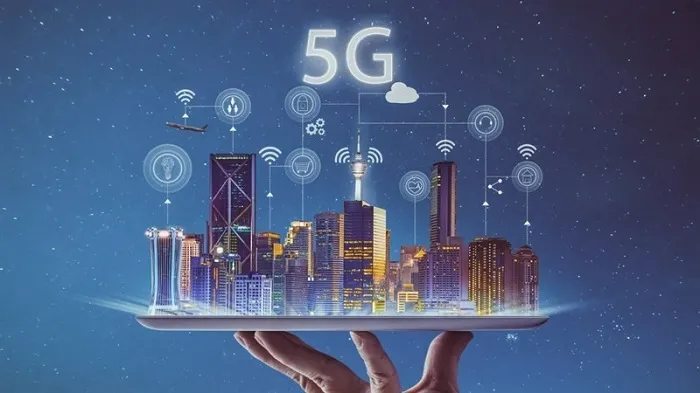

The Internet of Things (IoT) has rapidly expanded, connecting billions of devices and creating opportunities but also challenges in power consumption, coverage, and communication efficiency. 5G and NB-IoT are key technologies addressing these issues. While 5G offers ultra-fast speeds and low latency for real-time applications, NB-IoT provides deep coverage with low power consumption, making both essential for the future of IoT. This article explores how these technologies are transforming the IoT landscape through practical applications.
5G: The Game-Changer for Real-Time IoT Applications
The launch of 5G has had a profound impact on industries relying on real-time data and high-bandwidth applications. For instance, in autonomous vehicles, where latency is a critical factor, 5G offers the low latency required for vehicles to communicate with each other and surrounding infrastructure in real time. A car needs to make split-second decisions based on data from nearby vehicles, road sensors, and traffic signals to ensure safe navigation. With 5G, this communication happens almost instantaneously, enabling vehicles to make decisions on the fly, without delays.
One concrete example can be found in the smart city initiatives being implemented in cities like Singapore and Dubai. These cities are integrating a wide array of real-time sensors, from traffic lights to environmental monitoring systems, all of which communicate over 5G networks. For instance, in smart traffic management systems, 5G allows traffic lights to adapt to real-time traffic conditions, reducing congestion and improving road safety. Vehicles equipped with 5G-enabled devices can communicate with traffic infrastructure to receive instant updates on road conditions, accidents, or optimal routes, making urban mobility smarter and more efficient.
The benefit of 5G here is clear: its ability to transmit large amounts of data at lightning speed and with ultra-low latency is transforming sectors that rely on real-time, high-volume communication. In applications like autonomous vehicles, smart cities, and healthcare (such as remote surgery or patient monitoring), 5G ensures that data is transmitted almost instantly, leading to faster decision-making, improved operational efficiency, and enhanced safety.
However, while 5G’s benefits are apparent in high-bandwidth, low-latency applications, it’s not the ideal solution for every IoT use case. This is where NB-IoT comes into play.
NB-IoT: Optimizing Power and Coverage for Massive IoT Deployments
NB-IoT (Narrowband IoT) is revolutionizing the world of IoT by enabling massive-scale deployments of devices that don’t need high data throughput but require extended battery life and deep network coverage. This makes it ideal for applications like smart metering, agriculture, and asset tracking, where devices need to operate reliably in remote locations or on a long-term basis with minimal intervention.
Take smart agriculture, for example. A farming company in rural areas may deploy thousands of soil moisture sensors across wide farmland. These sensors don’t need to transmit large amounts of data, but they do need to operate for years without requiring battery replacements. NB-IoT is perfectly suited for this application because of its ability to operate in low-power states while still delivering reliable connectivity in remote locations with poor signal strength.
In addition to the agricultural example, smart metering is another key area where NB-IoT shines. A utility company in a large urban area with many buildings can use NB-IoT to deploy water, gas, and electricity meters that send small packets of data about usage to the cloud. Since these meters are powered by batteries, the long battery life of NB-IoT (up to 10 years) allows companies to reduce operational costs by avoiding the need for frequent maintenance. Furthermore, NB-IoT’s ability to penetrate deep into buildings ensures that the devices remain connected even in basements or other areas with weak cellular signals.
In asset tracking applications, companies can track the location of shipping containers or pallets of goods across vast distances. Using NB-IoT, they can send location data periodically while conserving battery life. Whether tracking goods in remote locations, monitoring logistics, or even monitoring the condition of machinery in hard-to-reach places, NB-IoT ensures that low-cost, long-lasting solutions can be deployed with ease, without compromising the quality of data transmission.
Combining 5G and NB-IoT: A Unified Approach to IoT Deployment
While 5G and NB-IoT are designed to address different aspects of the IoT ecosystem, they can also work together to provide a comprehensive solution for a wide variety of applications. For example, a smart logistics company could deploy NB-IoT for low-power, wide-area tracking of containers and pallets across long distances, ensuring minimal energy consumption and long battery life. When the shipment enters a city with access to 5G, the same company could take advantage of 5G’s high-speed, low-latency capabilities to track the container in real-time, integrating high-resolution GPS data, environmental sensors, and even camera systems to improve operational efficiency.

A good case in point of this hybrid deployment is smart healthcare. In hospitals or emergency medical services, 5G can provide real-time monitoring and data streaming from patient devices, like ECG machines or wearable health monitors, where low latency is crucial for immediate interventions. Meanwhile, NB-IoT can be used in less critical, long-term health applications like remote patient monitoring, where data needs to be collected over time, sent in small packets, and requires minimal power. By combining these technologies, healthcare providers can create a seamless network that offers both high-performance, real-time capabilities and low-power, long-term monitoring.
The combination of 5G’s speed and NB-IoT’s power efficiency creates a network that can scale IoT deployments in both urban and rural environments, ensuring that devices communicate efficiently regardless of location or power constraints.
ITR VN – A trusted tech hub in MedTech and Digital Health





.jpg)